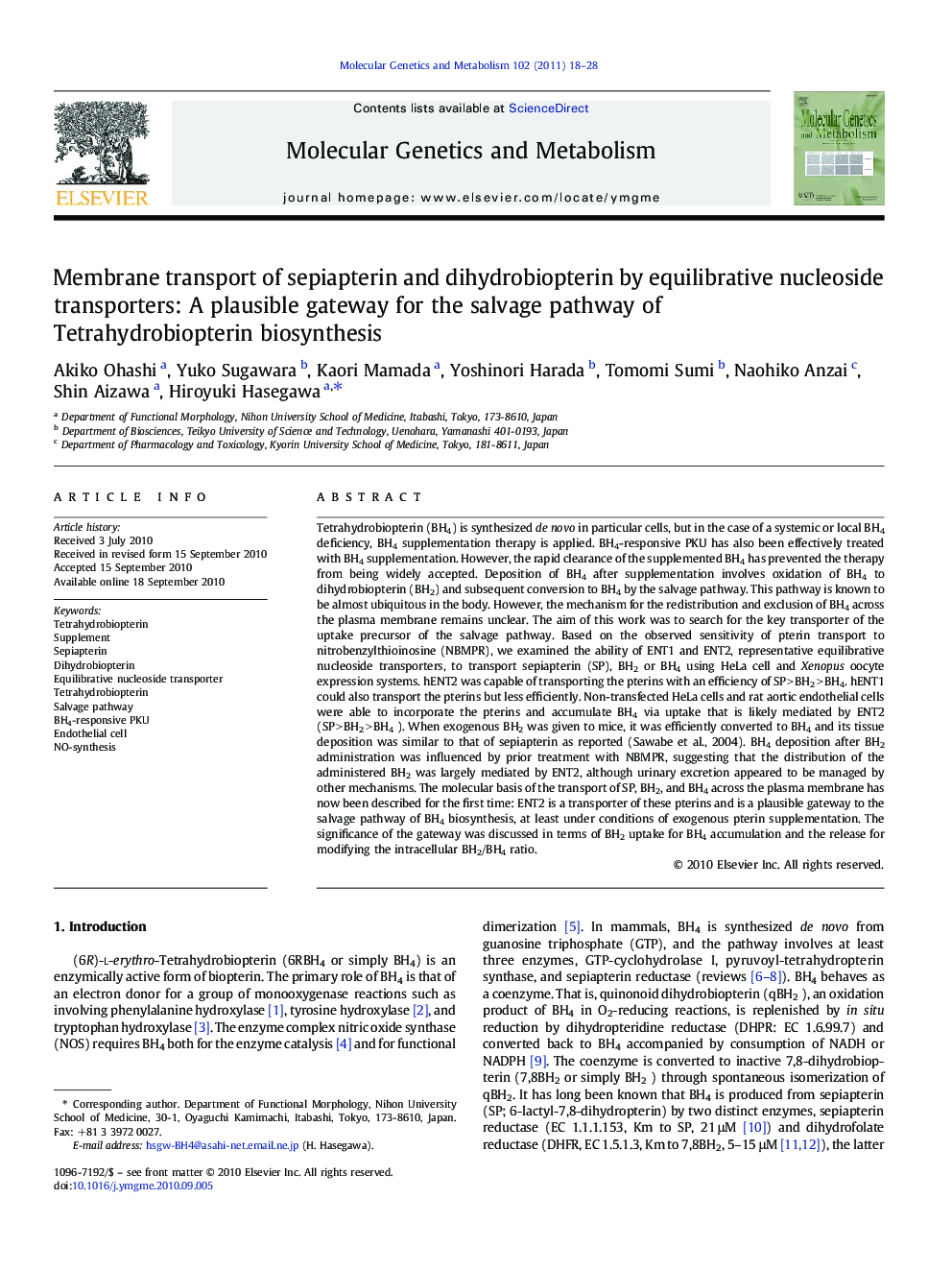| کد مقاله | کد نشریه | سال انتشار | مقاله انگلیسی | نسخه تمام متن |
|---|---|---|---|---|
| 1998455 | 1065808 | 2011 | 11 صفحه PDF | دانلود رایگان |

Tetrahydrobiopterin (BH4) is synthesized de novo in particular cells, but in the case of a systemic or local BH4 deficiency, BH4 supplementation therapy is applied. BH4-responsive PKU has also been effectively treated with BH4 supplementation. However, the rapid clearance of the supplemented BH4 has prevented the therapy from being widely accepted. Deposition of BH4 after supplementation involves oxidation of BH4 to dihydrobiopterin (BH2) and subsequent conversion to BH4 by the salvage pathway. This pathway is known to be almost ubiquitous in the body. However, the mechanism for the redistribution and exclusion of BH4 across the plasma membrane remains unclear. The aim of this work was to search for the key transporter of the uptake precursor of the salvage pathway. Based on the observed sensitivity of pterin transport to nitrobenzylthioinosine (NBMPR), we examined the ability of ENT1 and ENT2, representative equilibrative nucleoside transporters, to transport sepiapterin (SP), BH2 or BH4 using HeLa cell and Xenopus oocyte expression systems. hENT2 was capable of transporting the pterins with an efficiency of SP > BH2 > BH4. hENT1 could also transport the pterins but less efficiently. Non-transfected HeLa cells and rat aortic endothelial cells were able to incorporate the pterins and accumulate BH4 via uptake that is likely mediated by ENT2 (SP > BH2 > BH4 ). When exogenous BH2 was given to mice, it was efficiently converted to BH4 and its tissue deposition was similar to that of sepiapterin as reported (Sawabe et al., 2004). BH4 deposition after BH2 administration was influenced by prior treatment with NBMPR, suggesting that the distribution of the administered BH2 was largely mediated by ENT2, although urinary excretion appeared to be managed by other mechanisms. The molecular basis of the transport of SP, BH2, and BH4 across the plasma membrane has now been described for the first time: ENT2 is a transporter of these pterins and is a plausible gateway to the salvage pathway of BH4 biosynthesis, at least under conditions of exogenous pterin supplementation. The significance of the gateway was discussed in terms of BH2 uptake for BH4 accumulation and the release for modifying the intracellular BH2/BH4 ratio.
Journal: Molecular Genetics and Metabolism - Volume 102, Issue 1, January 2011, Pages 18–28